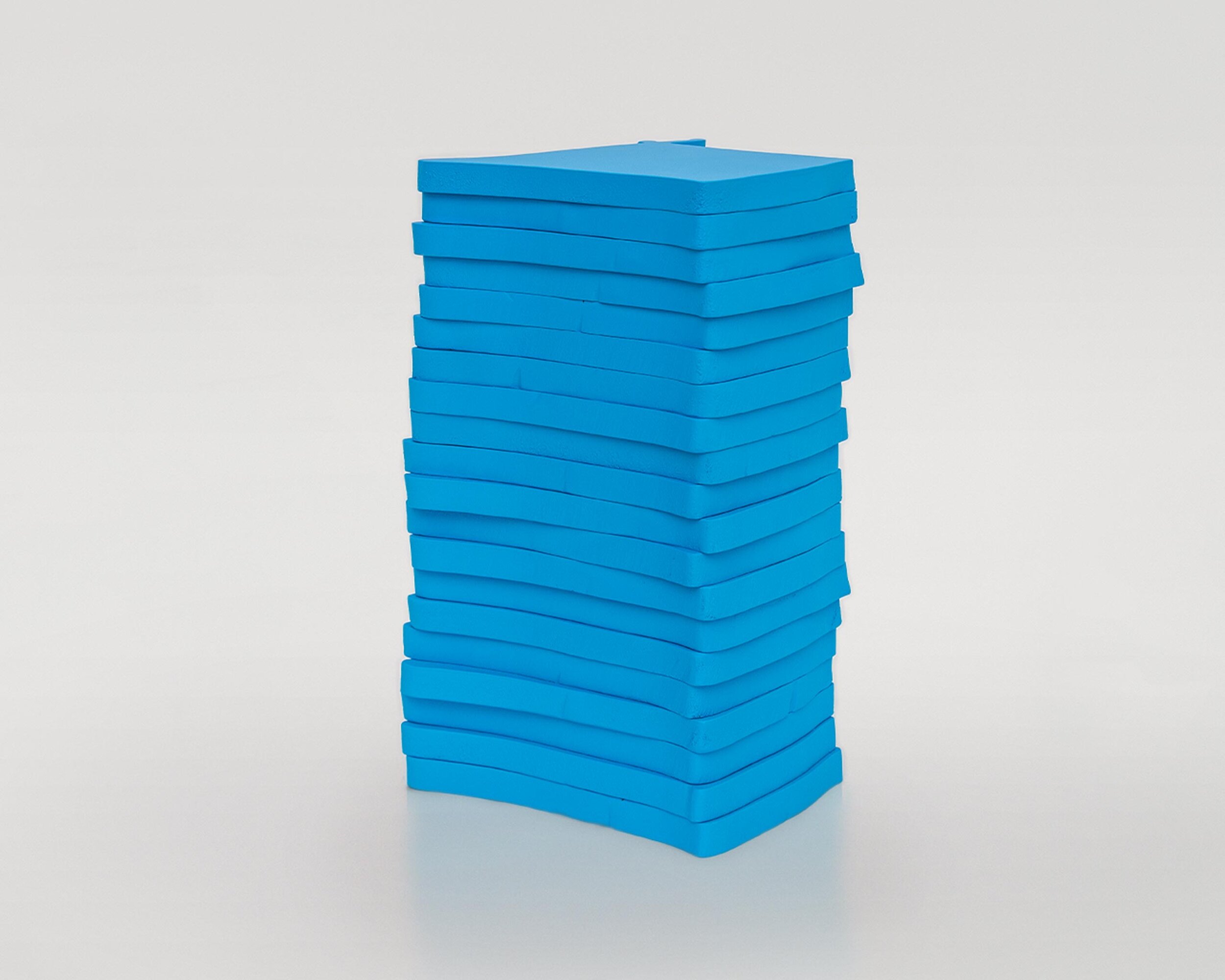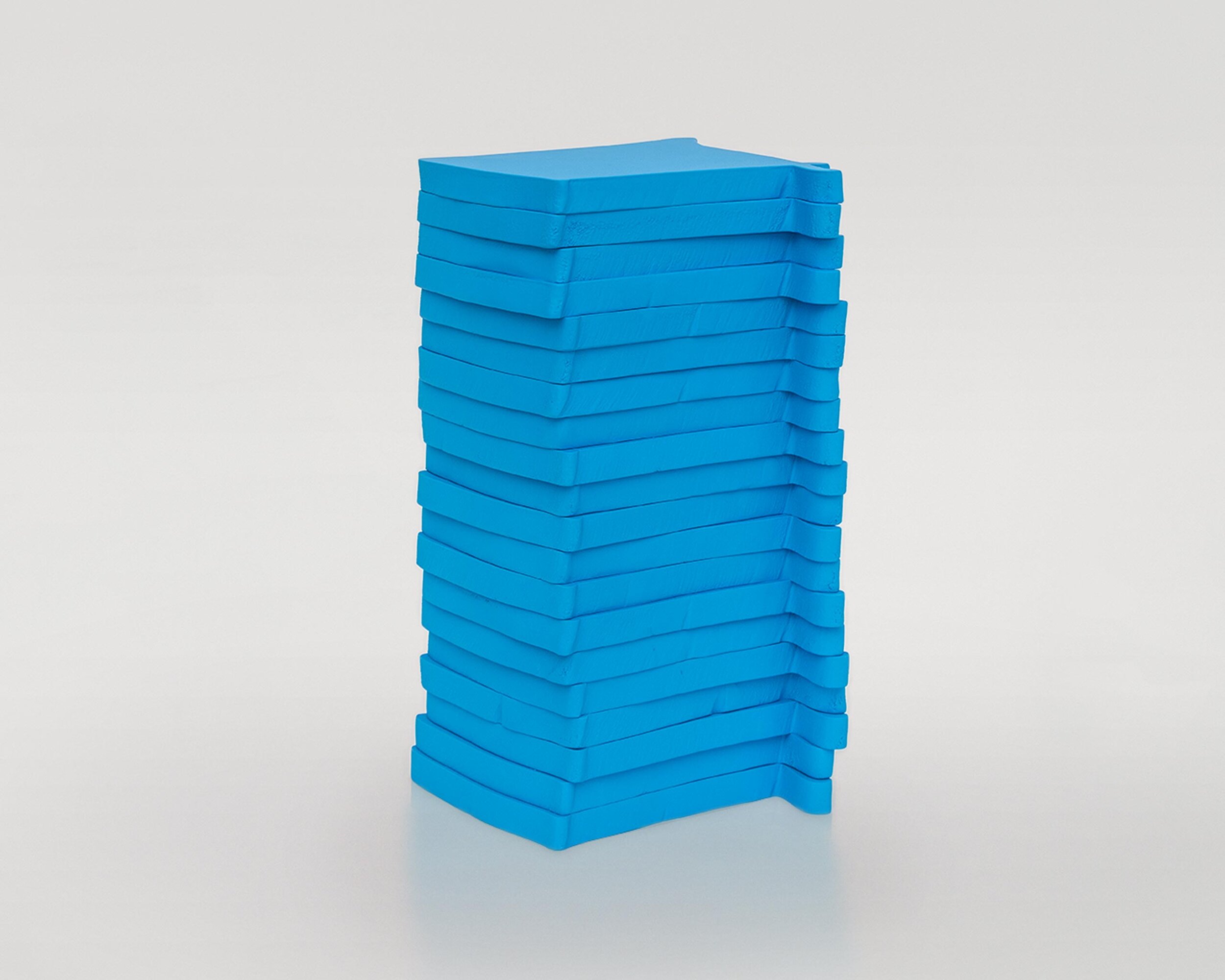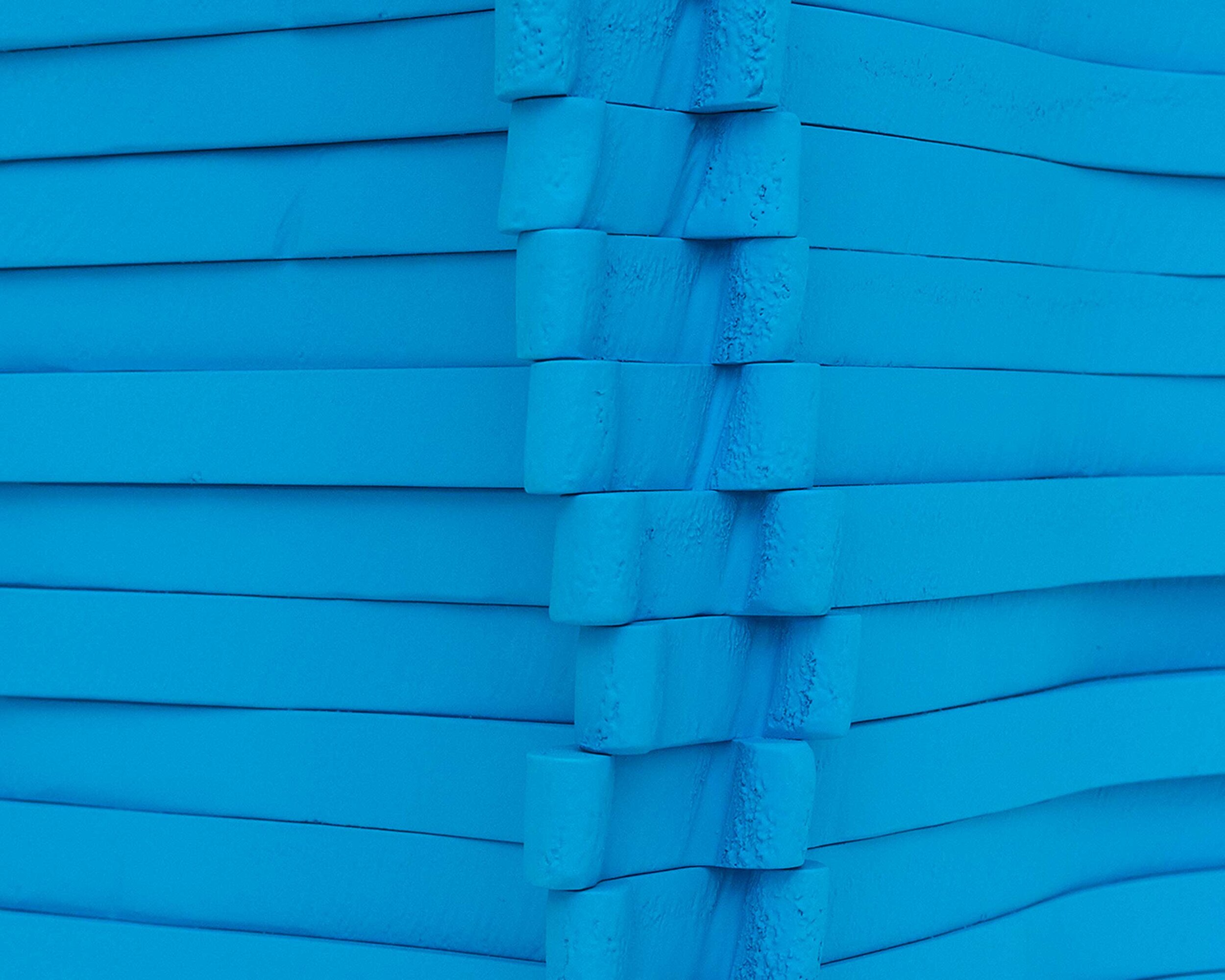Mimi Thompson Interview with Artist John Corbett
April 8, 2019
John, tell me a bit about the role of emotion in your work, as well as your desire to focus on human feelings while using technological means.
We seem to be swiping through life at a rapid pace, and I think this is especially true when it comes to how we consume/engage with images, particularly artwork. Technology has forced our brains to adapt to its processing speed and I think, at times, there is little chance to stop and think about what we are seeing. To me this is an emotionally unfulfilling state.
I have always been more interested in how something makes me feel rather than what it is, how it’s wrapped/ positioned or what it looks like; in order to emotionally connect with something time is an essential factor.
At its core, my work uses a visual language born from technology (replication abilities inherent in digital files and the digital fabrication processes) to delay our understanding of what we are really seeing. It takes a moment to figure out exactly what’s happening in my work and it is during this brief moment - when the brain is distracted by these visual nuances, that we switch from looking to engaging and from seeing to feeling.
Your work often looks light -like Styrofoam- but is heavy aluminum. Did you consciously create this illusion?
I deliberately play with the way materials look to illustrate that things are not always what they appear to be. What a viewer thinks they are seeing does not matter to me. How they feel about what they think they are seeing does. If I can take away the ability of the viewer to immediately recognize or identify the basic material they are looking at I think the emotional connection with a work can be stronger.
I made a small sculpture, Blue Stack, that consists of twenty 5/8” thick individual pieces of aluminum. Each piece was cut from the same CAD file on a Plasma cutter, and then welded together to create a singular form. The CAD files are identical however in the end each piece is slightly different. During the fabrication process we were able to control the amount of water build up in the air lines of the Plasma cutter so that the cut became a bit dull and left burring marks around the edges of each cut line. In addition, this process caused a slight difference in the angle of the plasma cutter which resulted in each piece having a slightly different angle to its edge. I deliberately stacked each of the twenty pieces slightly offset from one another to accentuate these surface tensions.
For the finishing of this work I used acrylic polyurethane industrial signage paint, however this paint and corresponding metal primer are designed to fill in blemishes and create an even surface. In a way we misused this paint and sprayed it very thinly so that the burring marks and slight differences remained. The end result looks like a stack of hastily cut Styrofoam.
I love the humanity and emotion in this sculpture and I love that it appears sloppy, human and hand-made despite the fact that I never touched it during the production process. The imperfections give the work it’s meaning and I like that despite all the technology used to create this work those imperfections remain.
Your drawing is done by hand but expanded with computer techniques; can you describe these techniques and is this another example of allowing a visual element to represent both the digital and the analog?
I start with a simple drawing in mind, usually comprised of a few squares or rectangles. I use a track pad, mouse, tablet or iPhone to draw the shape. I usually do around 100 or so before I end up with one that I really like. It can be a very fast process or it can take a couple of days. Although I would consider this first step drawing it really feels more like handwriting, especially since the scale of the touchscreens I use are designed for hand gestures.
I usually draw the shapes directly into a vector-based software like Adobe Illustrator so I can see the slight changes the lines make as they are digitized. Then the fun begins… using the very basic commands of the software- my shape can transform into a drop shadow, line, positive or negative space, or I can duplicate the shape and build a stack for a sculpture. I do not use the software to modify what I drew (the proportions, etc.) but simply to allow the very simple 2D drawing to oscillate between various forms and various sizes.
Like a traditional oil painting these works have several translucent or transparent layers of paint over an opaque base coat. The chemistry involved in today’s automotive refinishing industry is capable of producing extremely bright dye-based colors and strong pigments that when layered correctly can seem to hum or glow. The finish is highly sanded and then a chemically matte automotive clearcoat is sprayed. The resulting flatness and lack of surface depth is closer to a digital print, despite being hand sprayed paint. I think those lines are blurring anyway as technology evolves, but again I like the idea of a handmade object that is never “touched” by hand.
Although these works weigh in excess of 150 lbs. and are painted on solid aluminum, they don’t seem heavy. They are very complex chemically, yet you could run them through a car wash. They have moved through complex computer software systems, yet they do not seem fussy, are not fragile.
Mystery seems to play a part in your new works that consist of paintings in crates that can only be viewed through ridged plastic windows on the crate’s side. Is the ridged plastic a way to change the surface of the painting while the viewer moves- something that couldn't be done with a flat, matte surface?
For me the most interesting part of the Contract Paintings are the paradoxes they create. You see less detail of the painting but you actually feel more. There is a sense of loss, mystery and intrigue in the fact that you can’t see the full painting, however the subtle way that Coroplast diffuses the fluorescent light radiating from inside the boxes allows for a greater emotional connection with the works. For me these paintings are watching us, and because we do not fully see them we feel exposed.
The paintings inside the boxes utilize fluorescent pigments and because of the way fluorescent colors glow (by reacting with UV light they actually reflect more light than they receive) the images inside the boxes radiate outward toward the viewer.
Although I think these works would be classified as sculpture to me they are paintings. I titled the ongoing series, Contract Paintings, hinting at a perceived, if not legal binding contract between the artist and the owner/viewer to never open them. To me if they are opened they are voided as works and can no longer exist.









